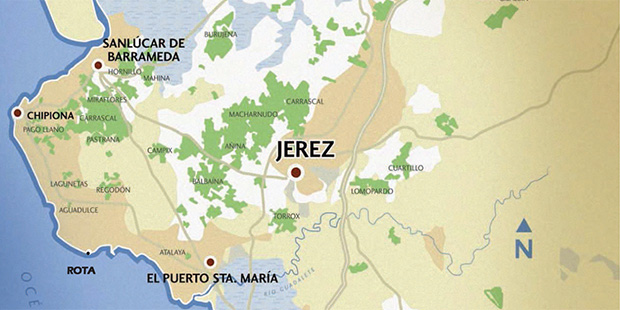What You Should Know About Sherry
Many whisky lovers give thanks to the sherry producers when they sip a sherry-matured whisky. However, how many of us know what sherry is and how many types of sherry there are in the market? Learning about sherry is fascinating, and that’s why we are here to give a brief introduction to sherry and the types of sherry in the market.
What is Sherry?
Sherry is a fortified wine produced in three areas of Spain’s ‘sherry region’. Located in the province of Andalucia, the three regions are Jerez de la Frontera, Sanlúcar de Barrameda and El Puerto de Santa María. These three regions form a sort of a triangle on the map, with Sanlúcar de Barrameda on the top western part, Jerez de la Frontera in the central and El Puerto de Santa María at the southern part. The soil around these areas are chalk or limestone based, and provide the perfect climate for growing grapes are suitable for making sherry.
Did you know that the word “sherry” came from the British trying to pronounce Jerez and failed to do so?
Sherry producers use three types of grapes to make the delicious fortified wine, namely Palomino grape, Pedro Ximénez and Moscatel. Palomino is the primary source, and interestingly, this grape variety is highly unknown in other parts of the world. However, it is a crucial grape variety to the making of sherry. Pedro Ximenez and Moscatel are typically sweeter in nature and are different from Palomino. The sherry types they produce are vastly different from the ones made from the Palomino.
Sherry Types
There are many sherry types but here are the main ones:
- Fino
- Manzanilla
- Amontillado
- Oloroso
- Pedro Ximenez
- Moscatel
Producers use different methods to make the different kinds of sherry, and it is no surprise that each of them has a different taste!
Sherry Styles
There are two basic styles of sherry – dry and sweet.
Dry Sherry
Within the dry category, there are two ways of ageing the fortified white wine, which is what sherry is!
The first way is through the use of flor (pronounce as ‘floor’). Flor is a type of yeast that forms a thin layer (about 2 cm thick) on top of the sherry wine as it begins to age. It prevents the wine from oxidation so that the sherry is aged without the aid of oxygen. Flor yeast is quickly killed by high alcohol content, however, so flor-aged sherry does not have an abv above 15%. Flor-aged sherry produces the “Fino” and “Manzanilla” sherries.
The second method is non-flor-ageing, which means that oxidation happens during the ageing process. The wines produced by this method are higher in abv, as they are not limited to the 15% alcohol content. Hence, sherry types made using the oxidation method are stronger in both flavours and alcohol content. Non-flor-ageing sherry produces the “Amontillado” and “Oloroso” sherries.
Sweet Sherry
Sweet sherry typically means the addition of sugar. However, producers differentiated them between “naturally sweet” or “artificially sweet”.
Naturally-sweet sherry typically means using the sweeter variety of grapes such as Pedro Ximenez or Moscatel instead of Palomino grapes to make the sherry. The production for this type of sherry is slightly different as the grapes are harvested much later and dried in the sun to extract more sugar before being pressed. They are called Vino dulce natural in Spanish.
Artificially sweetened sherry is usually a blend of dry sherry with sweet wines or grape syrup. For example, dry sherry made from Palomino grapes are mixed with Pedro Ximenez or Moscatel to create a blend of sweet sherry. Alternatively, producers add arrope, a highly concentrated syrup made of grape juice to the dry sherry to make it sweet. This type of sherry is called Vino generoso de Licar.
The importance of Sherry casks in the Whisky Industry
We know the importance of sherry casks in the whisky industry. We need them to mature our favourite whiskies, which is why learning about sherry is essential. If we appreciate sherry and learn to drink the wine, we may help to boost demand and encourage the sherry producers to increase production. That will, in turn, produce more sherry casks for our beloved whisky to mature in! See, it is a win-win situation for all!
So, my dear readers, buy some sherries and share it with your whisky-loving friends! After all, we need to do our part to help whisky producers lower the cost of sherry casks so that they can pass the savings to us!
What do you think?
Like what you have just read?




